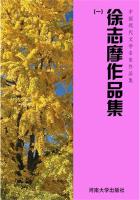1. On the Fire-festivals in general
THE FOREGOING survey of the popular fire-festivals of Europe suggests some general observations. In the first place we can hardly help being struck by the resemblance which the ceremonies bear to each other, at whatever time of the year and in whatever part of Europe they are celebrated. The custom of kindling great bonfires, leaping over them, and driving cattle through or round them would seem to have been practically universal throughout Europe, and the same may be said of the processions or races with blazing torches round fields, orchards, pastures, or cattle-stalls. Less widespread are the customs of hurling lighted discs into the air and trundling a burning wheel down hill. The ceremonial of the Yule log is distinguished from that of the other fire-festivals by the privacy and domesticity which characterise it; but this distinction may well be due simply to the rough weather of midwinter, which is apt not only to render a public assembly in the open air disagreeable, but also at any moment to defeat the object of the assembly by extinguishing the all-important fire under a downpour of rain or a fall of snow. Apart from these local or seasonal differences, the general resemblance between the fire-festivals at all times of the year and in all places is tolerably close. And as the ceremonies themselves resemble each other, so do the benefits which the people expect to reap from them. Whether applied in the form of bonfires blazing at fixed points, or of torches carried about from place to place, or of embers and ashes taken from the smouldering heap of fuel, the fire is believed to promote the growth of the crops and the welfare of man and beast, either positively by stimulating them, or negatively by averting the dangers and calamities which threaten them from such causes as thunder and lightning, conflagration, blight, mildew, vermin, sterility, disease, and not least of all witchcraft.
But we naturally ask, How did it come about that benefits so great and manifold were supposed to be attained by means so ******? In what way did people imagine that they could procure so many goods or avoid so many ills by the application of fire and smoke, of embers and ashes? Two different explanations of the fire-festivals have been given by modern enquirers. On the one hand it has been held that they are sun-charms or magical ceremonies intended, on the principle of imitative magic, to ensure a needful supply of sunshine for men, animals, and plants by kindling fires which mimic on earth the great source of light and heat in the sky. This was the view of Wilhelm Mannhardt. It may be called the solar theory. On the other hand it has been maintained that the ceremonial fires have no necessary reference to the sun but are simply purificatory in intention, being designed to burn up and destroy all harmful influences, whether these are conceived in a personal form as witches, demons, and monsters, or in an impersonal form as a sort of pervading taint or corruption of the air. This is the view of Dr. Edward Westermarck and apparently of Professor Eugen Mogk. It may be called the purificatory theory. Obviously the two theories postulate two very different conceptions of the fire which plays the principal part in the rites. On the one view, the fire, like sunshine in our latitude, is a genial creative power which fosters the growth of plants and the development of all that makes for health and happiness; on the other view, the fire is a fierce destructive power which blasts and consumes all the noxious elements, whether spiritual or material, that menace the life of men, of animals, and of plants. According to the one theory the fire is a stimulant, according to the other it is a disinfectant; on the one view its virtue is positive, on the other it is negative.
Yet the two explanations, different as they are in the character which they attribute to the fire, are perhaps not wholly irreconcilable. If we assume that the fires kindled at these festivals were primarily intended to imitate the sun's light and heat, may we not regard the purificatory and disinfecting qualities, which popular opinion certainly appears to have ascribed to them, as attributes derived directly from the purificatory and disinfecting qualities of sunshine? In this way we might conclude that, while the imitation of sunshine in these ceremonies was primary and original, the purification attributed to them was secondary and derivative. Such a conclusion, occupying an intermediate position between the two opposing theories and recognising an element of truth in both of them, was adopted by me in earlier editions of this work; but in the meantime Dr. Westermarck has argued powerfully in favour of the purificatory theory alone, and I am bound to say that his arguments carry great weight, and that on a fuller review of the facts the balance of evidence seems to me to incline decidedly in his favour. However, the case is not so clear as to justify us in dismissing the solar theory without discussion, and accordingly I propose to adduce the considerations which tell for it before proceeding to notice those which tell against it. A theory which had the support of so learned and sagacious an investigator as W. Mannhardt is entitled to a respectful hearing.















